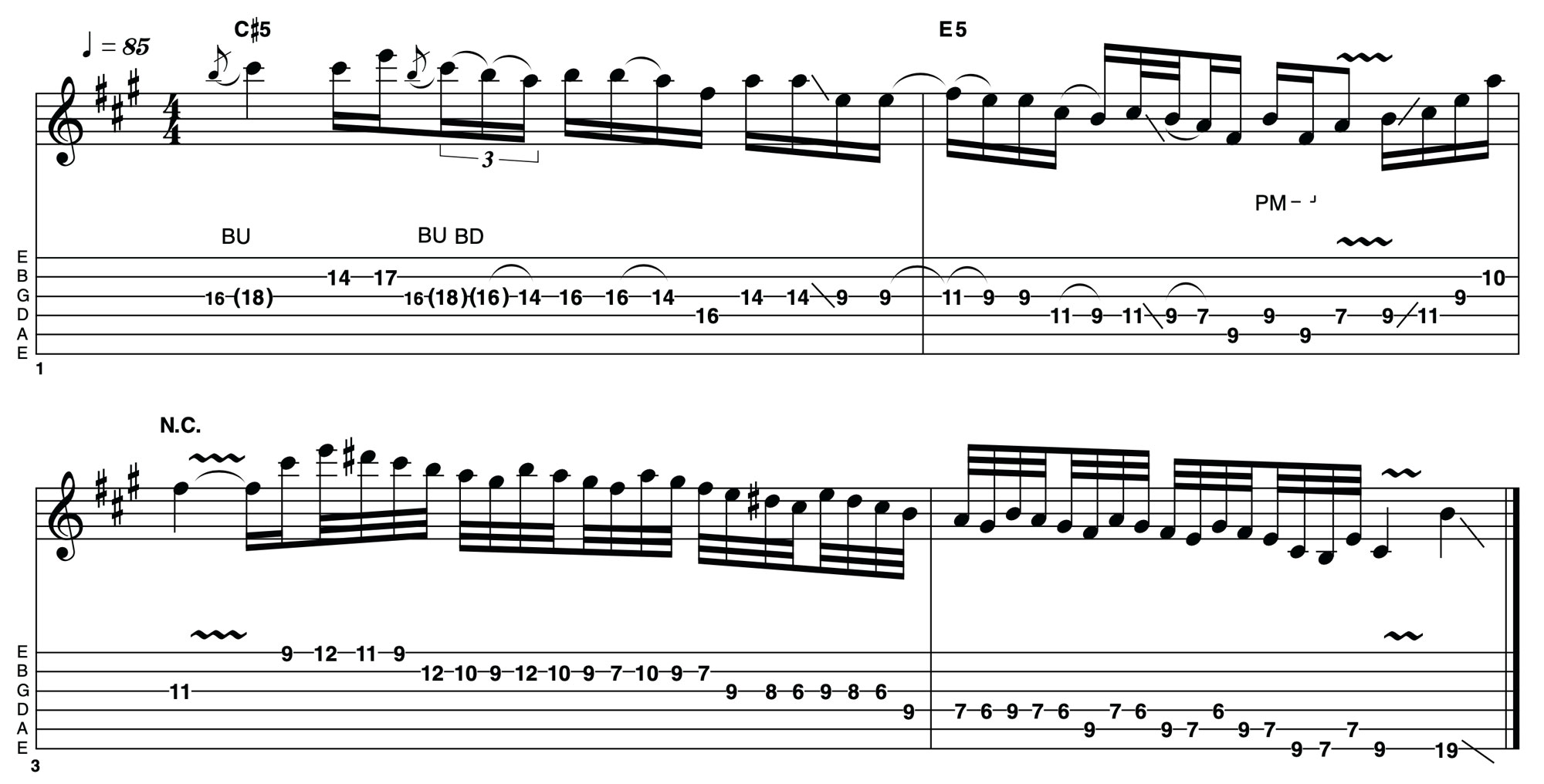Turn up the volume on your blues-rock soloing with this lesson in the style of Joe Bonamassa and Jimmy Page
Boost the gain, dig in, and don't let perfect be the enemy of good in this lead guitar workout

In this month’s blues lesson, I’ve taken a Zeppelin-style blues-rock riff and played a solo, which tips the hat somewhat to Jimmy Page circa Led Zeppelin I and II, but also leans towards the techniques and tones of modern blues-rock players, such as Joe Bonamassa, Gary Moore and maybe Johnny Winter in terms of intensity.
Yes, this is a bit of a workout at times, but completely justified in the spirit of cramming as many ideas as possible into a solo for the purpose of demonstration!
A backing track such as this demands a confident (if not flamboyant) approach, so I’ve boosted the gain and dug in fairly hard with the pick. The faster runs are the result of getting carried away rather than an over-rehearsed slick technique, though don’t read that as ‘easy to play’.
You may well recognise this approach from the Jimmy Page school of thought – it’s still amazing how he manages to create a sense of excitement that defies accurate transcription or analysis, but I’ve tried to put my own spin on it here. The object of this feature is really to demonstrate some possibilities and to give you the tools to make them part of your own bag of tricks.
Though I’ve showcased these ideas with a high-gain tone, you’ll find many of them translate in all kinds of musical situations – just check out Barney Kessel for some energised fast-picked phrases if you don’t believe me.
Though the transcribed examples are selected highlights, rather than a full transcription of the solo (there are too many notes to fit all of it in here!), I would encourage you to fill in the gaps by ear and with your own imagination; this is probably the best learning experience of all. Hope you enjoy and see you next time.
Example 1
The opening phrase is just two bars, but at this tempo that equates to quite a lot of information. The substance of this example is really the bends and vibrato of the first and last notes, with the shape 1 minor pentatonic (in the key of F#) providing some embellishment.
All the latest guitar news, interviews, lessons, reviews, deals and more, direct to your inbox!
A touch of light palm-muting helps with the articulation here and there – and we mustn’t forget the slide down the low E string to start, which gives a clear statement that we mean business.
Example 2
For the second two bars, I’m shifting to shape 3 of the F# minor pentatonic, with the frequent addition of the 6th (D#) at the 8th fret of the G string. In itself, this is quite a ‘Pagey’ move, but combined with the fast-picked repetitive phrase, I’m undeniably paying tribute to his phrasing on those early Zeppelin albums. Perfection is not the main aim, but it can’t fall apart, either. The good news is you get to decide where that line is!
Example 3
We rejoin the action here after the IV chord (B), continuing with the same F# minor pentatonic (shape 1 again, but this time up an octave at the 14th to 17th fret).
It’s at this point that we 2 switch to a more Joe Bonamassa-style approach, descending in groups of six and skipping up an octave when we reach the bottom string – an approach popularised by the great Eric Johnson.
Example 4
Spanning four bars here, you’ll see why I’ve gone with two bars in the previous examples! This final phrase works its way down from the 17th fret to the 5th-to-7th fret area to ‘handover’ back to the riff.
The transition between registers is mostly accomplished by slides, then a long-picked run in groups of six and four. This isn’t premeditated – you just have to get used to calculating where you want to land on the fly (not that I landed so gracefully on that last note...).
As well as a longtime contributor to Guitarist and Guitar Techniques, Richard is Tony Hadley’s longstanding guitarist, and has worked with everyone from Roger Daltrey to Ronan Keating.





